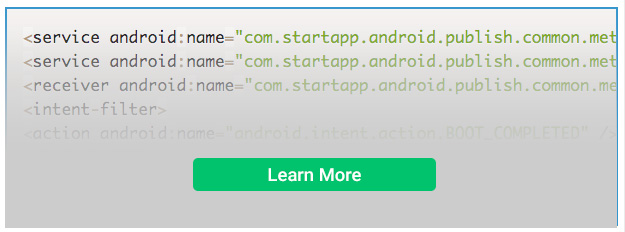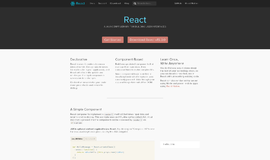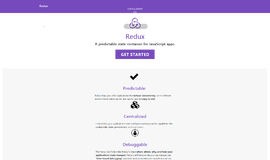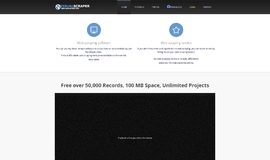Mobile Monetization with StartApp
It started as just an idea, a little spark. But now, after countless hours and dollars invested, that idea has taken the long road to becoming a published app. But if your app is going to survive in today’s crowded marketplace, your monetization strategy and its execution will have to be spot on. And if you think a few old school banner ads are going to do the trick, you are sorely mistaken.
Like most things in the mobile world, monetization is increasingly complex, and today’s users have less patience for “Click Here” ads. But this doesn’t mean that in-app advertising is dead. Rather, the trick seems to be the introduction of ads or other payment opportunities that don’t disrupt the user and break their app engagement. It’s a tricky balancing act, and to achieve it you’ll most definitely need an SDK of some sort. But for better or for worse, this is another crowded arena.
One company that approaches in app advertising with an innovative SDK is StartApp. They offer more than just an ad platform (social data, VR, digital content), but here we’ll be looking at what their SDK can contribute to a modern monetization strategy.
The company's mission is to leverage data intelligence to create the most fulfilling mobile moments for partners and their users. The creation of “fulfilling mobile moments” may sound like fluff at first, but the idea is that the ad should not only feel like a natural part of the app, but that the right ad at the right time can even improve the user experience. StartApp does this in several ways with a few different kinds of ad options. App publishers can use the StartApp SDK to choose from a range of sizes that will fit any space in the app. Their ads always have a natural or native look and feel, which helps engage the user.
One of the cooler options that really promotes interaction and engagement is the 360 degree ad. Using the phone's built-in gyroscope, the user is emerged in a 360 degree 3D environment—this is the kind of thing that people just can’t resist interacting with. It’s these kinds of innovative types of ads that really help increase revenue for apps using StartApp. If fact they claim to deliver the highest eCPM in the industry.
Another aspect that StartApp focuses on is using big data to target the right ads for each user. They attempt to target very specific users for a particular campaign which of course has a significant influence on the percentage of users that interact with an ad. Obviously, it’s a complex process based on many variables and lots of data. One example of how this is done is to have the ad appear only on devices with specific apps installed.
An example that StartApp gives is if you are promoting a casino app, you can choose to target your campaign only to users who have the top grossing casino apps already installed.
StartApp’s SDK integration is pretty easy and it supports major platforms like iOS, Android, Unity, Marmalade, and others. Their dashboard is intuitive and displays accurate data. You can break down your revenue by eCPM, app, geographic location, AdType and more. It also allows you to export various reports from daily to monthly.
Let’s take a quick look at adding the SDK to an Android project. We’ll start by using Gradle's Dependency Management. Add the following repositories and dependencies to your app-level build.gradle file:
repositories {
jcenter()
}
dependencies {
compile 'com.startapp:inapp-sdk:3.6.3'
}
Next you’ll need to update your AndroidManifest.xml file and add the following permissions under the main <manifest> element:
<uses-permission android:name="android.permission.INTERNET" />
<uses-permission android:name="android.permission.ACCESS_WIFI_STATE" />
<uses-permission android:name="android.permission.ACCESS_NETWORK_STATE" />
<uses-permission android:name="android.permission.ACCESS_COARSE_LOCATION" />
<uses-permission android:name="android.permission.ACCESS_FINE_LOCATION" />
<uses-permission android:name="android.permission.RECEIVE_BOOT_COMPLETED" />
<uses-permission android:name="android.permission.BLUETOOTH" />
Then add the following activities under the <application> element:
<activity android:name="com.startapp.android.publish.ads.list3d.List3DActivity"
android:theme="@android:style/Theme" />
<activity android:name="com.startapp.android.publish.adsCommon.activities.OverlayActivity"
android:theme="@android:style/Theme.Translucent"
android:configChanges="orientation|keyboardHidden|screenSize" />
<activity android:name="com.startapp.android.publish.adsCommon.activities.FullScreenActivity"
android:theme="@android:style/Theme"
android:configChanges="orientation|keyboardHidden|screenSize" />
Next add the following service receiver under the <application> element:
Last we’ll initialize. In your main activity, go to the OnCreate method and before calling setContentView() call the static function:
StartAppSDK.init(this, "Your App ID", true);
Replace "Your App ID" with your own value provided in the developers’ portal.
To find your application ID, click on the "Apps and Sites" tab on the left pane and choose the relevant ID from your app list:

The last true parameter enables "Return Ads". If you want to disable this feature, simply pass false instead.
The full documentation can be found here: https://github.com/StartApp-SDK/Documentation/wiki/Android-InApp-Documentation
From here you can choose which add you like to enable or disable, which is quite simple. For example if you want to disable Splash Ads simply call:
StartAppAd.disableSplash() after calling StartAppSDK.init
You’ll have similar options with Return Ads, Exit Ads, Interstitial Ads, Banners and more, including Native Ads which you’re free to design and control as you see fit. Have a look at these examples:
Pretty smooth!
Another important consideration when choosing a monetization SDK is the growth and future of the company. It’s always reassuring to know you’re with a company on the rise—and StartApp seems to be doing well in this area.
They recently had some pretty solid figures coming out of a report published by MOBBO called “The State Of Mobile Monetization.” It was a pretty impressive study. Mobbo reviewed a database of over 2 million analyzed apps, and 1,000 SDK components scanned across iOS and Android and all categories, making it the most in-depth study of its kind to date.
In a category in the report called “in-app advertising share of voice”, which measures the percentage of apps utilizing a specific SDK in the monetization category, StartApp had an impressive 19% on Android. This means that StartApp’s SDK is integrated into almost 1 in 5 ad-supported Android apps.
Further, over the 90 day period of the report, they had a growth rate of over 36%, standing out among their main competition. It really shows that the company is moving in the right direction.
With each passing year, the average user is becoming savvier and less likely to interact with mobile app advertisements. It can be far too easy to blow through a budget with old school, ineffective ads. But by using engaging, interactive ads that are actually fun, StartApp can really help you stay ahead of the crowd and increase revenue for your app in today’s difficult market. For a solid monetization strategy, StartApp is definitely worth checking out.
Recent Stories
Top DiscoverSDK Experts


Compare Products
Select up to three two products to compare by clicking on the compare icon () of each product.
{{compareToolModel.Error}}



















{{CommentsModel.TotalCount}} Comments
Your Comment